For others it is a philosophy or a culture. There are so many kinds of Buddhism and so many contradictions within the overall tradition that it is almost impossible to define, but there are important common threads. The so-called “Three Jewels” (Triratna)—Buddha (see Buddha, Gautama Buddha), dharma (see Dharma), and saṇgha—are essential elements for Buddhists. In most sects there is the presence of certain of the teachings or concepts of Gautama Buddha, the Buddha Sākyamuni, who lived in Nepal and India some 2,500 years ago. Of primary importance to these teachings are śūnyatā, the sense of selflessness achieved by way of inner searching—often in a monastic setting—and a goal of nirvāna (see Nirvāna), or Enlightenment. Dharma, or proper behavior and truth, in the Buddhist world is manifested in the life and teachings of the Buddha. Saṇgha, or “community,” is the holy community of Buddhists, a place of spiritual refuge. Saṇgha can refer to a community of nuns or monks or to any group of devoted and spiritually committed Buddhists. At the basis of saṇgha are the “Four Noble Truths” of the Buddha's teaching. These are (1) the acceptance of dukkha, or transience and the suffering which comes with it; (2) the realization that it is tanhā, or the “thirst” for permanence that leads to suffering; (3) the understanding that by eliminating taṇha, dukkha can be overcome and nirvāna achieved; and (4) the AṣṠgika-mārga, or “Eightfold Path” to the elimination of taṇha taught by the Buddha in the first sermon after his Enlightenment.
The Eightfold Path contains the elements necessary to Enlightenment. These are (1) perfected understanding of the Four Noble Truths; (2) non-attachment; (3) perfected speech; (4) perfected conduct; (5) the pursuit of livelihood in such a way as to do no harm to others; (6) the production of good karma (see Karman); (7) the development of meditative mindfulness; and (8) perfected concentration.
A major division between Buddhists centers around the question of boddhisatvas (see Boddhisattva) and whether emphasis should fall on the individual salvation or that of the larger society. There are two major paths or “vehicles” (yāna) in Buddhism. The older Hīnayāna (see Hīnayāna Buddhism) or “Lesser Vehicle,” so termed by the reformist Mahāyāna (see Mahāyāna Buddhism) or “Larger Vehicle” group, is represented, for instance, by the Theravāda (see Theravāda Buddhism) and Sarvāstivāda sects which developed in India before the Common Era and have spread to various parts of the Asian continent. The Hīnayāna approach stresses the ideal of the arhat (see Arhat), the enlightened one who has attained nirvāna. The Mahayana groups stress the ideal of the bodhisattva, not as the earlier stages of Gautama Buddha's movement toward Enlightenment, but as the person concerned with achieving Buddhahood only in some distant eon as he works compassionately in this world for the salvation of others. It should be noted that within the larger divisions of Hīnayāna and Mahāyāna exist many diverse understandings and doctrinal divisions.
The original literature of Hīnayāna Buddhism is written primarily in the Middle India dialect of Sanskrit called Pāli (see Pāli). The Pāli Abhidhamma PiṠaka, for instance contains sermons (suttas) and Theravādan doctrine. The primary Mahāyāna scriptural form is the sūtra (sermon of the Buddha), which is traditionally recited or chanted as a form of worship. The best known of the sūtras is probably The Lotus Sūtra (the Saddharmapuṇḍarīka Sūtra), which has a strong narrative aspect and stresses the relationship of all people to the deeds of the Buddha himself.
More esoteric forms of Buddhism include the Tantric tradition (see Tantric entries) and Zen Buddhism (see Zen Buddhism). Tantric Buddhism is influenced by Brahamanism (see Brahmanism) and is concerned with yogic (see Yoga) paths to salvation stressed in rituals and in texts called tantras. Zen, primarily practiced in Japan, developed from Chinese Ch'an Buddhism and emphasizes meditation rather than the worship of idols.
The myths of Buddhism are associated with the life of Gautama Buddha and are found primarily in the Pāli-language canon of the Theravāda tradition in first century BCE Sri Lanka, although stories have emerged from other traditions as well.
US History Encyclopedia: Buddhism
Top Home > Library > History, Politics & Society > US History EncyclopediaBy 2002 Buddhism had become highly visible in many countries outside of Asia. Although it never became nearly as popular as in Asia, by the 1990s Buddhism's influence on America was visible in the arts, in the steadily increasing number of converts and Buddhist institutions, and in the growing recognition of Buddhist groups as participants in the multireligious composition of U.S. society. In each Asian culture, it generally took many centuries for Buddhism to acculturate. In contrast, in the West, attempts to create adapted, regionalized forms of Buddhism occurred at a much faster pace. New schools and lineages additionally pluralized the spectrum of Buddhist traditions present in Western countries.
History
The origin of Buddhism in America can be traced to Chinese immigrants who began to appear on the West Coast in the 1840s. By 1852, around 20,000 Chinese were present in California, and within a decade, nearly one-tenth of the state's population was Chinese.
Japanese Buddhism developed more slowly in America than the Chinese form, but had much greater impact. By 1890, the Japanese population in the United States was barely 2,000. The World Parliament of Religion, held in 1893, radically changed the landscape for Japanese Buddhism in America. Among the participants was a Rinzai Zen monk, Shaku So[UNK]en, who returned to America in 1905, lecturing in several cities, and establishing a basic ground for the entry of Zen. Upon his return to Japan in 1906, three of his students were selected to promote Rinzai in America: Nyo[UNK]gen Senzaki, Shaku So[UNK]katsu, and Daisetz Teitaro Suzuki.
Rinzai was one of several Zen traditions to develop in America. So[UNK]to[UNK] Zen began to appear in America in the 1950s, and by the mid-1950s, Soyu Matsuoka Ro[UNK]shi had established the Chicago Buddhist Temple. Shunryu Suzuki Ro[UNK]shi arrived in San Francisco in 1959, founding the San Francisco Zen Center shortly thereafter. His (mostly Western) successors continued the So[UNK]to[UNK] lineage. Another form of Zen that took root in America attempts to harmonize the major doctrines and practices of each school into a unified whole. Proponents of this approach include Taizan Maezumi Ro[UNK]shi (who arrived in 1956), Hakuun Yasutani Ro[UNK]shi (who first visited the United States in 1962), and Philip Kapleau. Also significant are Robert Aitken Ro[UNK]shi, who founded the Diamond Sangha in Hawaii in 1959, Eido[UNK] Shimano Ro[UNK]shi, who first came to the United States as a translator for Yasutani Ro[UNK]shi, and Joshu Sasaki Ro[UNK]shi, who founded the Cimarron Zen Center in Los Angeles in 1968 and the Mt. Baldy Zen Center three years later.
Zen was not the only Japanese Buddhist tradition to make an appearance in America before the turn of the twentieth century. In 1899 two Japanese missionaries were sent to San Francisco to establish the Buddhist Mission of North America, an organization associated with the Pure Land school of Japanese Buddhism. Reincorporated in 1944 as the Buddhist Churches of America, it remains one of the most stable Buddhist communities in North America.
In the 1960s, another form of Japanese Buddhism, now known as So[UNK]ka Gakkai International-USA, appeared on the American landscape, and by 1974 it boasted over 200,000 members. This group grew out of the So[UNK]ka Gakkai movement in Japan, a nonmeditative form of Buddhism that based its teachings on the thirteenth century figure Nichiren (1222–1282). Although the group splintered in the late twentieth century, it remained a formidable Buddhist presence in America, having become extremely attractive to European American and African American Buddhists.
At the same time the Chinese were once again making their presence visible in American Buddhism. One notable addition was a largely monastic group known as the Dharma Realm Buddhist Association, created by a venerable monk named Hsüan-Hua. Of even larger size was the Hsi-Lai Temple outside Los Angeles, founded in 1978, and eventually offering a wide variety of Buddhist teachings and services. By 2002 Chinese Buddhist groups could be found in virtually every major metropolitan area.
The Buddhist culture to enter America most recently is the Tibetan. Although a few Tibetan Buddhist groups appeared in the West prior to 1960, the majority came after China's invasion and occupation of their country. Communities from each of the four major Tibetan sects can now be found in America. The Tibetan groups were the most colorful of all the Buddhist groups prospering in late twentieth century America, possessing a rich tradition of Buddhist art and a powerful psychological approach to mental health. In the early 2000s they continued to grow rapidly.
The final sectarian tradition to be considered is that of the Therava[UNK]da. Most recently, groups from Laos, Cambodia, Thailand, and Myanmar migrated to the United States to escape the economic and political uncertainty of their native countries. Therava[UNK]da temples sprang up in the Southeast Asian enclaves of major cities. The Therava[UNK]dabased Vipassana[UNK] movement became the most attractive form of this tradition among Euro-Americans.
Institutional Issues
Five areas of institutional concern can be outlined in the American Buddhist tradition: ethnicity, practice, democratization, engagement, and adaptation. Two questions help to contextualize these mutually influencing issues: first, how Buddhist identity is determined, and finally, the degree to which ecumenicity might play a role in providing a unifying instrument for the exceedingly diverse spectrum of Buddhist traditions in North America.
Who is a Buddhist? Identifying and quantifying American Buddhists has been an important issue. By the mid-1990s, scholars estimated the American Buddhist population to be four to five million. Although there were many possible methods of determining Buddhist identity in America, the most accepted approach was that of self identification. This approach allowed each group to be counted regardless of how they interpreted and practiced Buddhism.
Ethnicity. One late twentieth century attempt to quantify the American Buddhist population estimated that of the total Buddhist population in the United States, perhaps 800,000 were Euro-American convert Buddhists. This suggested that the vast majority of Buddhists in America were Asian immigrants. The relationship between Asian American Buddhists and converted Buddhists was tenuous.
Practice. There was no disagreement among researchers that Asian immigrant Buddhist communities and American convert communities engaged in significantly different expressions of Buddhist practice. The general consensus was that American converts gravitate toward the various meditation traditions, while Asian immigrants maintain practices consistent with ritual activity or Pure Land observance.
Democratization. While Asian Buddhism was, for the most part, primarily hierarchical and highly authoritarian, the forms of American Buddhism that developed in the late twentieth century underwent a process of democratization. It could be observed in changing patterns of authority in the various Buddhist sanghas, or communities, highlighted by a reevaluation of the relationship between the monastic and lay communities. Second, democratization could be witnessed in changing gender roles in American Buddhism, especially in the prominence of women. Finally, it could be seen in the manner in which individuals pursuing a nontraditional lifestyle, particularly with regard to sexual preferences, found a meaningful role in American Buddhist communities.
Engagement. "Socially engaged Buddhism" has application to a wide variety of general human rights issues, such as antiviolence and environmental concerns, but also to the lives of individual Buddhists. The greatest challenge for socially engaged Buddhism in the West is organizational. In the early 2000s, it was far less developed in its organizational patterns and strategies than its Christian or Jewish counterparts. Nonetheless, an exciting array of activities could be documented in the records of the individual American Buddhist communities.
Adaptation. Perhaps the one issue that dominated the early comprehensive books on American Buddhism was adaptation or acculturation. As one early researcher asked, "Is there a characteristically American style of Buddhism?" Some North American Buddhists were concerned about the implications of altering the Buddhist tradition in the name of adaptation. American Buddhism has created, in addition to its distinct practices, a series of enterprises that Asian Buddhism never imagined: residential communities, businesses, farms, hospices, publishing companies, meditation products, cottage industries, and the like. Critics worried that these innovations represented a distraction from the purpose of Buddhist practice.
Ecumenicism. In each of the issues cited above, it is possible to discern the need for cooperative discussions between American Buddhists of all traditions. In July 1987, a conference on world Buddhism in North America was sponsored by the Zen Lotus Society in Ann Arbor, Michigan. It included a wide variety of talks, panel discussions, and meetings in an effort to bring together representatives of the Buddhist traditions in America to work together toward common goals. In the end, they sought to create a protective umbrella under which the issues of ethnicity, practice, democratization, engagement, and adaptation could be addressed productively, ushering in a successful future for the Buddhist movement in America.

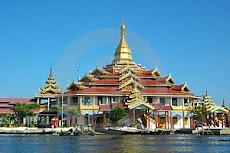
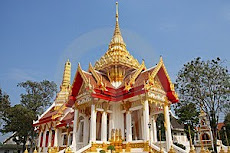



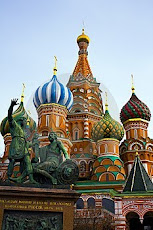


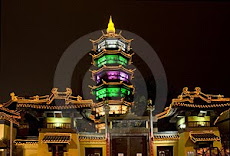
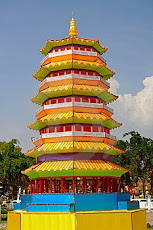



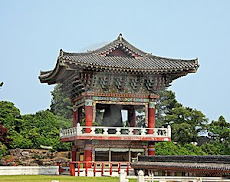
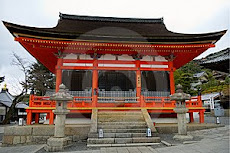





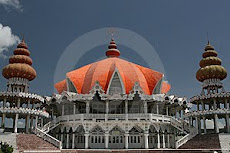

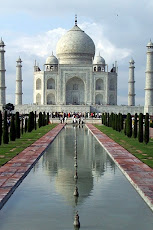





















No comments:
Post a Comment